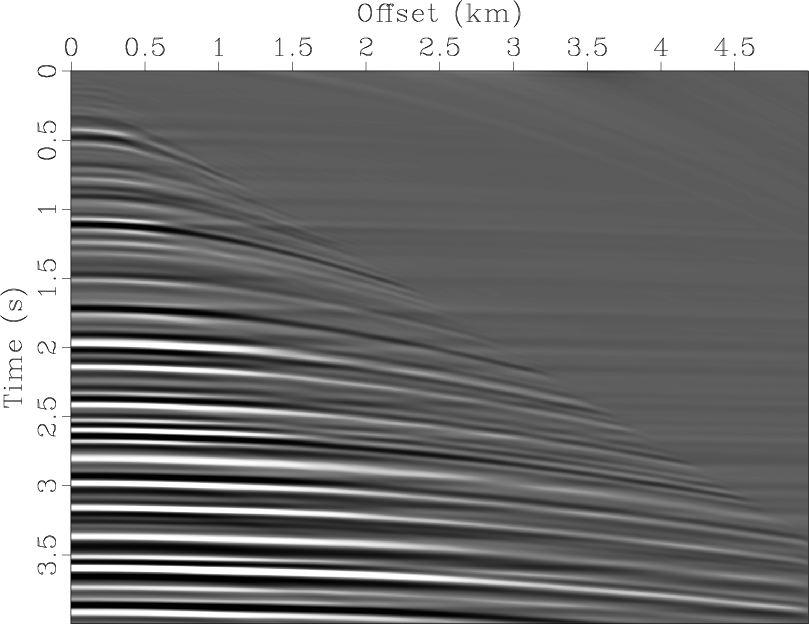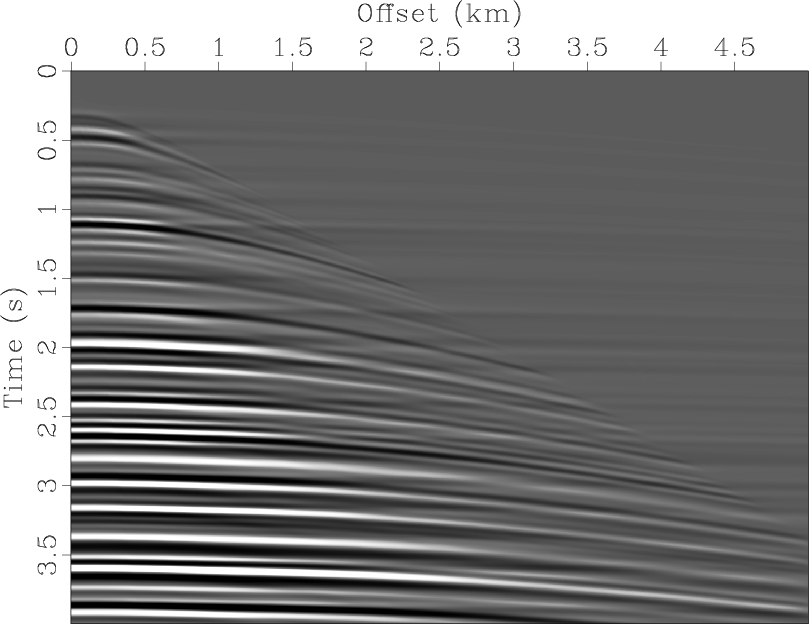|
|
|
|
A fast butterfly algorithm for generalized Radon transforms |
The last example is concerned with the computation of the adjoint of the hyperbolic Radon transform. Assuming ![]() and
and ![]() are two arbitrary functions (in the discrete sense) in the model domain and data domain, if we require
are two arbitrary functions (in the discrete sense) in the model domain and data domain, if we require
| (29) |
 |
(30) |
We consider still the first example and apply the (discrete) adjoint operators of the fast butterfly algorithm and the velocity scan respectively to the data in Figures 5 and 6. The two methods produce similar results (see Figures 19, 20). It is also clear that the adjoint is far from the inverse, at least for this geometry, hence some kind of least-squares implementation is needed for inversion process.
To further verify that the numerically computed ![]() is the adjoint operator of
is the adjoint operator of ![]() , one can compare the values of
, one can compare the values of
![]() and
and
![]() for arbitrary
for arbitrary ![]() . Indeed, the proposed algorithm passed this dot-product test with a relative error of
. Indeed, the proposed algorithm passed this dot-product test with a relative error of
![]() in single precision.
in single precision.

|
|---|
|
fdat
Figure 19. Output of the adjoint fast butterfly algorithm applied to the data in Figure 5. |
|
|

|
|---|
|
didat
Figure 20. Output of the adjoint velocity scan applied to the data in Figure 6. |
|
|
|
|
|
|
A fast butterfly algorithm for generalized Radon transforms |